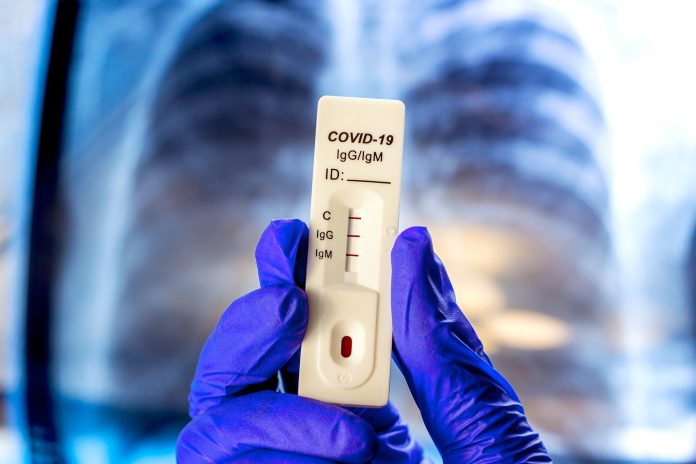Severe cases of inflammation from COVID-19 can occur in some people – leading to cases of acute respiratory distress and multi-organ damage
The researchers, conducting an analysis in Boston Children’s Hospital, found that the antibodies that people develop when they contract COVID-19 can also sometimes lead to more inflammation.
Yet it was also found that healthy patients who had received mRNA vaccines against COVID-19 had developed antibodies which did not appear to facilitate infection – reducing the risk of inflammation from COVID-19 through vaccination.
Judy Lieberman, MD, PhD, lead author said: “We wanted to understand what distinguishes patients with mild versus severe COVID-19. We know that many inflammatory markers are elevated in people with severe disease, and that inflammation is at the root of disease severity, but we hadn’t known what triggers the inflammation.”
Properties of antibodies can either increase or decrease inflammation from COVID-19
Published in Nature, the researchers took fresh blood samples from patients with COVID-19 coming to the emergency department at Massachusetts General Hospital, and found the source of inflammation from COVID-19.
Comparing these with samples from healthy people, as well as patients with other respiratory conditions, they also looked in lung autopsy tissue from people who had died from COVID-19.
From this analysis they discovered that SARS-CoV-2 can infect monocytes, which are immune cells in the blood that act as “sentinels” or early responders to infection; as well as macrophages, similar immune cells in the lungs.
Once infected, both types of cells die – a process called pyroptosis – which then releases an explosion of powerful inflammatory alarm signals throughout the body, specifically to the organs.
They found from examining the lung tissue from people who died from COVID-19 that about a quarter of the macrophages in the tissue were dying, then when studying the cells for signs of SARS-CoV-2, they also found that around 10% of monocytes and 8% of lung macrophages were infected also.
The fact that monocyte and macrophages can be infected with SARS-CoV-2 came as a surprise to researchers, since monocytes don’t carry ACE2 receptors – the classic entry portal for the virus – and macrophages have low amounts of ACE2.
They assume this SARS-CoV-2 infection of monocytes may have previously been missed in former research as researchers often study frozen blood samples, in which dead cells do not show up.
Lieberman said: “In the infected patients, about 6% of blood monocytes were dying an inflammatory death. That’s a large number to find, because dying cells are rapidly eliminated from the body.”
Luckily, the cells die quickly from pyroptosis before the formation of new viruses
While SARS-CoV-2 was able to infect monocytes and macrophages, luckily, it wasn’t also able to produce new infectious viruses – this could be due to how the cells die quickly from pyroptosis before new viruses can fully form – which is hope for research on inflammation from COVID-19.
A certain group of monocytes was especially likely to be infected: those carrying a receptor called CD16 – to which these “non-classical” monocytes make up only about 10% of all monocytes, but their numbers were increased in patients with COVID-19. They were also more likely to be infected: about half were infected, as compared with none of the classical blood monocytes.
The CD16 receptor can recognise antibodies against the SARS-CoV-2 spike protein, which may allow these antibodies to actually facilitate infection of monocytes carrying the receptor.
However, when the team studied healthy patients who had received mRNA vaccines against COVID-19, the antibodies they developed did not appear to facilitate infection.
This may be down to vaccine-generated antibodies having slightly different properties than antibodies that develop during infection and don’t bind as well to the CD16 receptor – which indicates that the cells don’t take the virus up.
Lieberman finalised: “In some ways, uptake of the virus by these ‘sentinel’ cells is protective: it sops up the virus and recruits more immune cells. But the bad news is that all these inflammatory molecules get released. In people who are more prone to inflammation, such as the elderly, this can get out of control.
“The antibodies coat the virus, and cells with the CD16 receptor then take the virus up. It may be that later on, antibodies may help enhance inflammation. We may need to look at the properties of the antibodies.”











